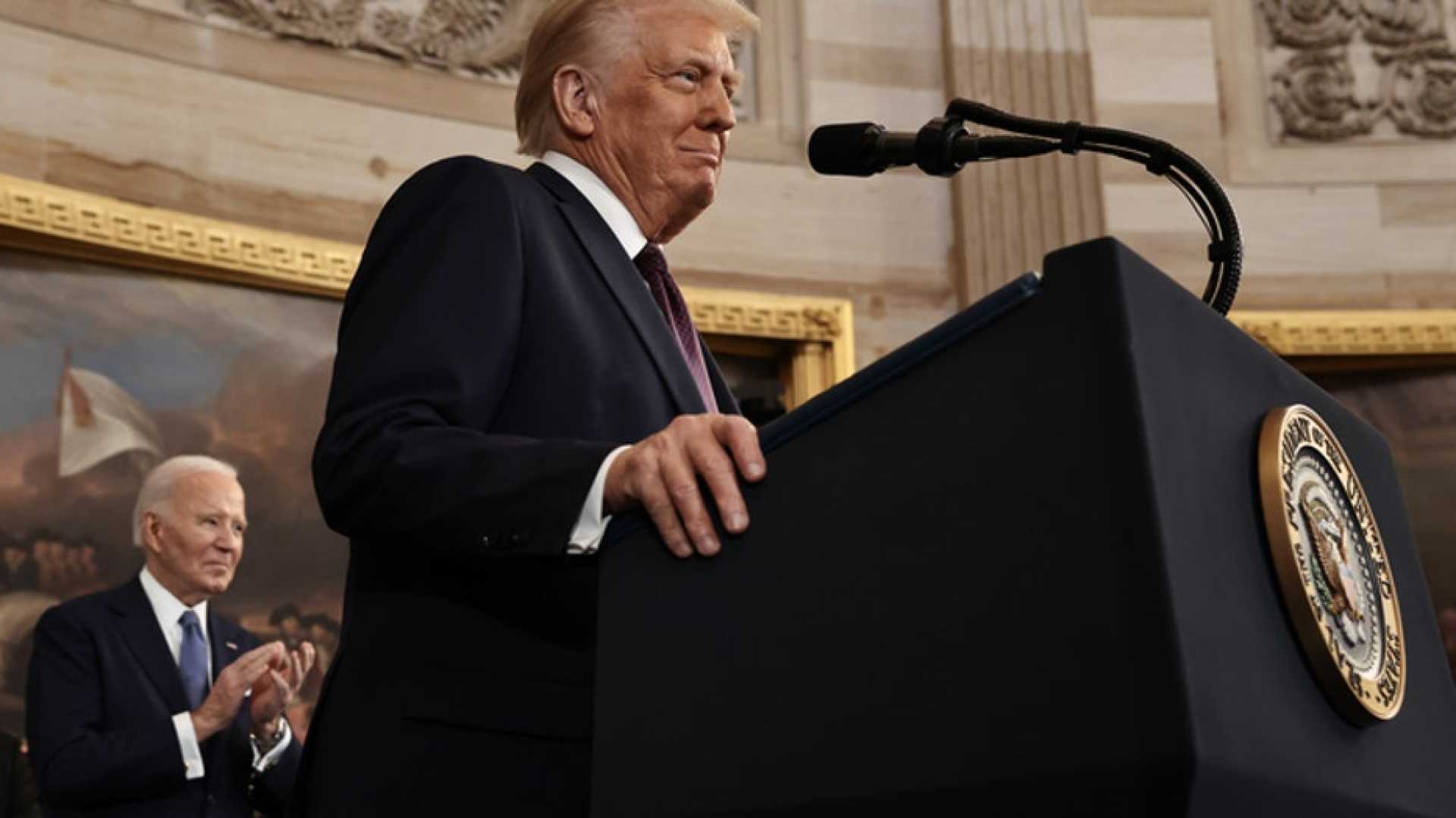Politics
Trump Sworn In as 47th President Amid Protests and Policy Shifts

WASHINGTON — Donald Trump was sworn in as the 47th president of the United States on Monday, Jan. 20, 2025, marking the start of his second term amid heightened security and nationwide protests. The inauguration, held at the U.S. Capitol, saw Trump vow to reshape the nation’s institutions while Republicans claimed unified control of Washington.
Trump’s inauguration was marked by a scaled-back indoor parade at Capital One Arena due to frigid temperatures. The event, attended by supporters and lawmakers, featured a moment of silence for Corey Comperatore, a rallygoer killed during an assassination attempt on Trump in Pennsylvania last summer. Emergency officials from Butler County, Pennsylvania, marched in the parade, carrying Comperatore’s fire jacket.
“The golden age of America begins right now,” Trump declared during his inaugural address, which focused on themes of national renewal and executive action. He promised to address immigration, inflation, and energy policies, signaling a sharp departure from the Biden administration’s agenda.
Outside the Capitol, thousands of protesters gathered in cities across the country, including Chicago, New York, and Washington, D.C., to denounce Trump’s policies. In Chicago, activists chanted “The people united will never be defeated” and carried signs opposing mass deportations and systemic oppression. Similar demonstrations occurred in Mexico City, where protesters burned a piñata resembling Trump and criticized his immigration policies.
Trump’s inauguration also saw significant personnel changes, with the appointment of acting secretaries for the Army, Navy, and Air Force. The Department of Government Efficiency, a nongovernmental agency, announced the departure of Vivek Ramaswamy, who plans to run for governor of Ohio. Meanwhile, the State Department experienced a wave of resignations among senior career diplomats as the Trump administration prepared to install its own appointees.
In a symbolic move, Trump ordered U.S. flags to be flown at full staff on Inauguration Day, reversing a directive by former President Joe Biden to lower them in honor of the late Jimmy Carter. The new president also announced plans to withdraw the U.S. from the Paris Climate Agreement, a decision that drew criticism from environmental advocates and international leaders.
As Trump took office, Biden departed Washington for California, marking the end of his presidency. Biden’s farewell ceremony at Joint Base Andrews included a message to his staff: “We’re leaving office, but we’re not leaving the fight.”
The inauguration underscored the deep political divisions in the country, with Trump’s supporters celebrating his return to power and critics vowing to resist his policies. The day’s events set the stage for a contentious second term, with Trump promising swift action on his campaign promises.












